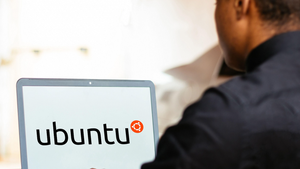Observability in 2025: Open Source Use Rising as Complexity Challenges GrowObservability in 2025: Open Source Use Rising as Complexity Challenges Grow
Grafana Labs' Observability Survey finds 75% of organizations are using open source observability tools while battling complexity challenges.

Observability is a critical aspect of modern IT operations, but how organizations manage and deploy it keeps changing.
The third annual Observability Survey from Grafana Labs has revealed significant shifts in how organizations implement, manage, and prioritize their monitoring and observability strategies. While tool sprawl was a primary concern three years ago, the issues facing organizations in 2025 are somewhat more nuanced.
The survey is based on responses from 1,255 professionals across diverse industries and roles. The findings highlight a continued preference for open source solutions, rising executive awareness of observability's strategic value, and persistent challenges with complexity.
Key findings from Grafana Labs' Observability Survey include:
75% of organizations now use open source observability solutions, with 70% implementing both Prometheus and OpenTelemetry.
Complexity ranks as the No. 1 concern (39%), followed closely by signal-to-noise challenges (38%).
One-third of companies report the CTO as the highest level where observability is considered business-critical.
Organizations are consolidating tools, using an average of eight observability technologies (down from nine in 2024).
85% of companies have implemented unified infrastructure and application monitoring in some capacity.
Cost remains the dominant criterion for selecting observability tools (74%), outranking ease of use and interoperability.
Tracing and Profiling Technology Is Now Widely Used
For Marc Chipouras, head of Emerging Products at Grafana Labs, one of the survey's most surprising findings was the number of organizations adopting tracing and profiling technology.
Tracing technology allows users to understand how requests flow through a system, while profiling tools identify performance bottlenecks in applications and infrastructure. The report shows that 57% of organizations are now using traces, and a significant percentage are also exploring profiling. Chipouras noted that the result was unexpected, given that traces have historically been considered a more complex part of observability. However, this aligns with the rapid maturation of centralized observability approaches.
"Our data shows organizations are more than twice as likely to follow the most mature approach, centralized observability support, than the least mature one, operations team approach," Chipouras told ITPro Today. "This acceleration has happened much faster than we anticipated. We expected a more gradual evolution as teams worked through the complexity challenges."
That means that as teams develop more sophisticated observability strategies, they recognize the critical importance of traces and profiling to support end-to-end visibility in today's distributed systems rather than just metrics and logs, he added.
Open Source Adoption Continues to Grow
The survey highlights the continued dominance of open source solutions in observability, with 75% of respondents using open source in some capacity. Prometheus maintains strong production usage at 67%, while OpenTelemetry, though at 41% production usage, shows significant momentum for future growth.
In Chipouras's view, the high open source adoption rate probably represents two organizational drivers. First, organizations often have many observability tools. Open source software (OSS) tools will always have a home amidst that complex observability landscape. Second, there is a strong community drive to remove vendor lock-in in observability. This penetration is representative of the success of that push.
"The adoption varies a bit across industries. According to our data, all industries have adopted OSS in some capacity," Chipouras said. "However, more regulated industries like healthcare are often constrained by compliance requirements that sometimes favor commercial solutions, while others are driven more by cost control and the flexibility of open source, like software companies."
C-Suite Recognition Drives Advanced Adoption
The survey reveals that observability is increasingly recognized at the executive level, with 33% of respondents citing the CTO as the highest position where observability is considered business-critical. Organizations with C-suite support demonstrated higher adoption rates of advanced observability practices.

Financial services companies (45%) are most likely to have C-suite engagement in observability initiatives, while healthcare (20%) and government (18%) organizations reported the lowest executive-level involvement.
"Observability strategies are increasingly being led at the CTO level," Chipouras said. "That's a shift from where we were just a year ago."
The survey revealed that organizations with executive-level buy-in are consistently ahead of the curve by adopting distributed tracing at higher rates and implementing service-level objectives (SLOs) more aggressively, he said.
Complexity and Alert Fatigue Remain Top Challenges
Despite advances in tooling, complexity remains the primary concern for practitioners, with 39% citing it as their biggest observability challenge. This is closely followed by noise and signal-to-noise issues (38%) and cost concerns (37%).
Alert fatigue was identified as the No. 1 obstacle to faster incident response across almost all organizational levels. The only exception was among engineering managers, who were slightly more likely to cite "painful incident coordination across teams" (25%) over alert fatigue (24%).
AI Features in High Demand for Complexity Reduction
As teams struggle with complexity and alert noise, AI-powered features top the wish list for future observability improvements.
According to Chipouras, the survey reveals an interesting disconnect: While organizations are interested in AI/ML capabilities, particularly for training-based alerts (31%) and faster root cause analysis (28%), AI/ML is not one of the top requirements they consider when purchasing new tools.
"Our hypothesis is that there still might be a bit of skepticism in what is currently achievable in observability with AI, but we think this will shift significantly in the next year as these tools prove to reduce MTTR [mean time to response] and speed up incident response," he said.
About the Author
You May Also Like





.jpg?width=700&auto=webp&quality=80&disable=upscale)

